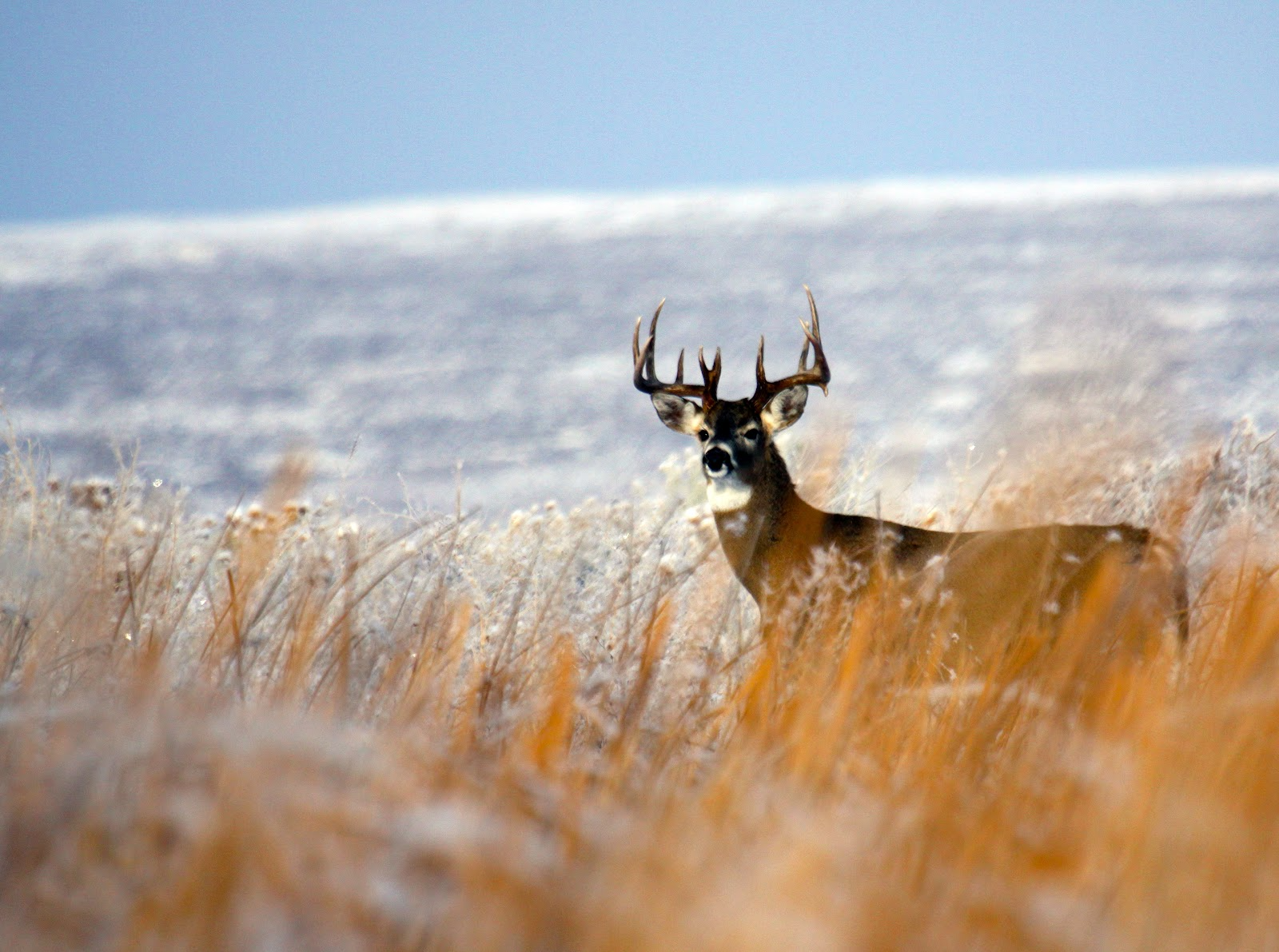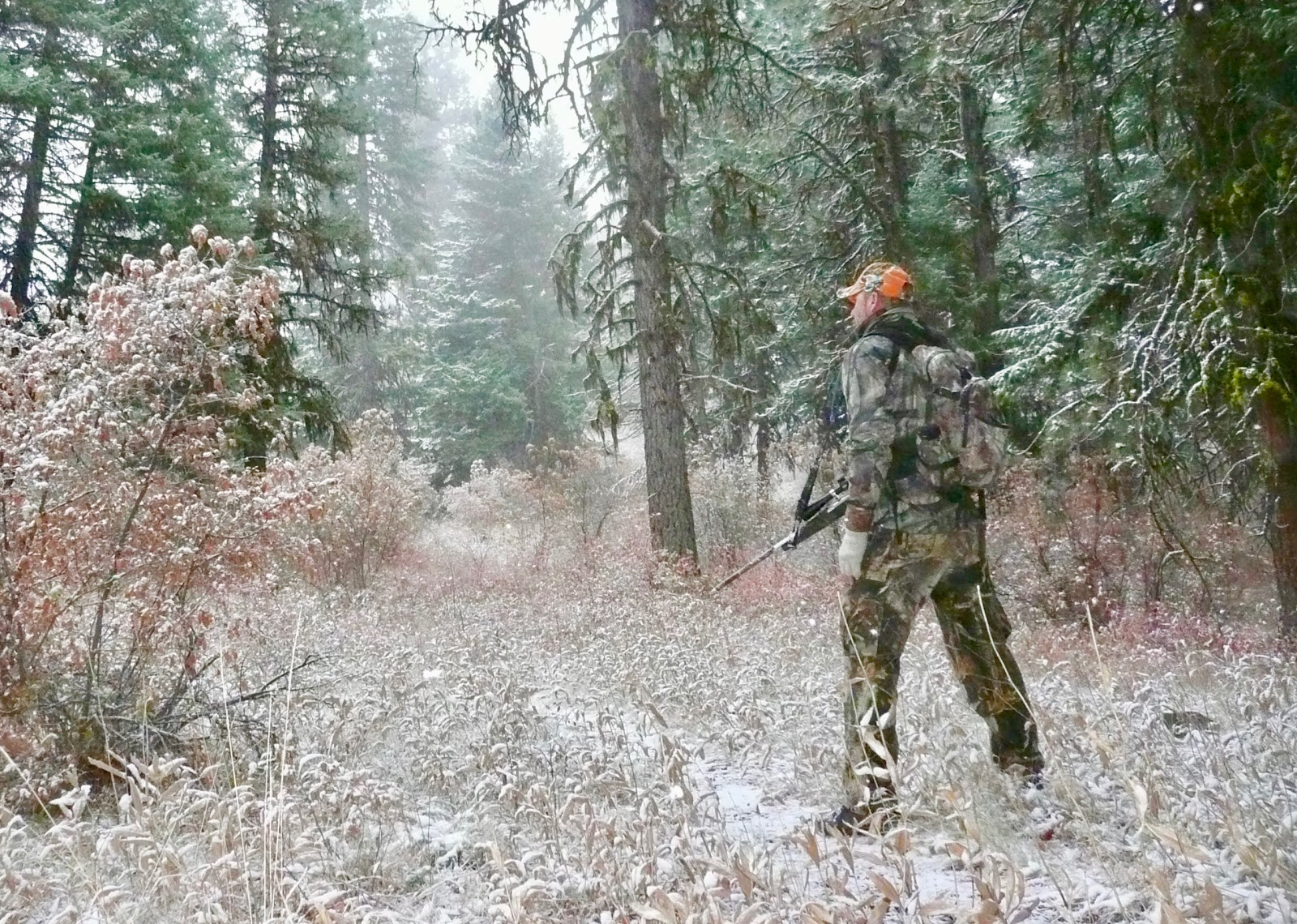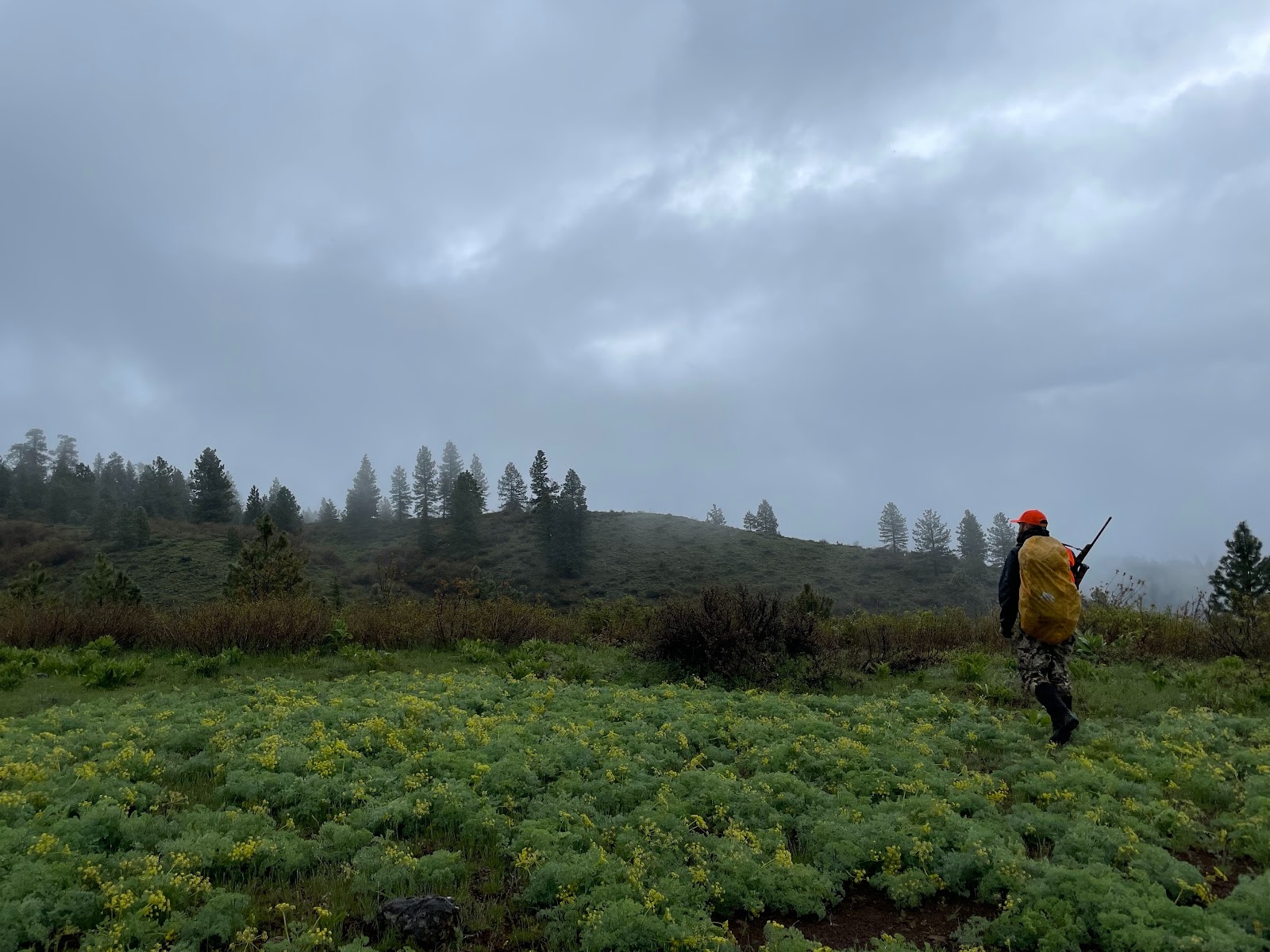Hunting attire can make or break a late-fall hunting trip
CONNOR LIESS/Contributing Writer | Coeur d'Alene Press | UPDATED 2 years, 1 month AGO
For a greenhorn or seasoned hunter, assessing the weather and dressing accordingly can be a bit of a tightrope walk.
The pre-dawn hours waiting for the propane stove to fire up might make reaching for a thick down jacket tempting, but 100 yards into a hike it’ll be shedded like a husky in August.
Picking the right clothing for a fall hunt is just as important as picking which rifle to shoot or which lunch to pack. Idaho’s unpredictable weather is the butt of many a joke and can hang a person out to dry (figuratively speaking) if they’re not prepared.
As the temperature dips, hunting tends to improve, so consider these tips so make the most of hunts regardless of the weather.
All about that base
A hunter’s base layer is the first line of defense against Idaho’s frigid weather. When picked right, it can keep a hunter warm and comfortable throughout the entire hunt, dawn to dusk. But when slapped together or overlooked, it can let the cold in like a bear in a donut shop.
Today’s modern base layers make the term "long underwear" seem antiquated. Base layer technology has come a long way, giving hunters tons of options for a warm and comfortable defense against the weather.
The key to picking the right base layer is wool or synthetic fabric that wicks away moisture and retains its warming properties when damp or wet. There are several thickness options (lightweight, mid-weight, etc.) to choose from, but generally speaking, unless hunting in severe cold or sitting in a tree stand for eight straight hours, light- and medium-weight wool or synthetic base layers are the way to go.
Now if bullets kill big game, cotton kills hunters. Not literally, of course, but wearing wet cotton on a sub-40-degree day is about as fun as snowshoeing in sandals. When wet, whether that be sweat or late-fall rain-sleet mix, cotton sucks the warmth out of the body, so avoid it at all costs.
Freezing isn’t the only potential consequence from a poorly picked base layer. It is easy to “dress for the cold” when sitting on the tailgate back at camp, but overdoing it with a heavyweight base layer can soon become a poor decision in the first moments of climbing a ridge. Because base layers are unlikely to come off during the course of a hunt, remember to find a happy medium with thickness and anticipate the day warming up.

Layer up
In Idaho, it's not uncommon for a sunny morning to turn into a rainy midday, which leads to the next essential consideration: layers.
Layers provide warmth and protection from the weather, and they can easily be added or removed as the day progresses. The term "layer" can encompass various options, but, in general, a substantial 4-inch goose down parka might be best left in the car unless planning to spend the entire day in a tree stand or hunting blind. However, it's advisable to consider wearing or bringing a fleece sweater or sweatshirt, with a hoodie being a valuable addition, especially when needing to keep ears and necks warm.
Since everyone has their own definition of what's considered cold, it's essential to understand their body's needs and the capabilities of their chosen layers before setting out on a hunting expedition. It's a good idea to check the day's weather forecast if possible and decide which layers are believed to be most effective.
In a similar vein, taking into account the protective qualities of layers is important. If the forecast predicts rain or sleet during the hunt, it's wise to think about bringing a waterproof sweater or windbreaker.

The same goes for pants, too. More often than not this time of year, all that dense forest undergrowth will be steeped in early-morning dew. When trudging through the brush, be sure pants and outer layers not only repel water but don’t sound like a thousand people eating potato chips either.
Also remember smaller bodies, such as women or kids, may need thicker layers than a large man, and everyone is a little different in their cold tolerance. But one thing everyone shares is it’s much easier to stay warm and comfortable when dry, so remember that wicking base layer and don’t be shy about shedding layers if, or when, sweating starts.
Waterproof vs. water resistant, which is better?
When standing in the clothing department at a local sporting goods store, it’s easy to ponder the blurry marketing features waterproof or water resistant. Some items say water-resistant, and others waterproof, and others waterproof and breathable.
What really is the difference, and does the product say one thing but demonstrate another? As frustrating as that dilemma can be, picking the right type of water protection can be a gamechanger, depending on which part of the state or climate to go hunting in.
As the names imply, waterproof means that the fabric should prevent any moisture from getting in, while water-resistant means that it will do its best to prevent any moisture from getting in, but eventually, it’s going to soak through.
But any fabric that keeps moisture out also keeps most moisture in, and that presents a big decision for hunters: Do you want to be dry or dry-ish?
Most waterproof options tend to be less breathable — or don’t breathe at all — allowing moisture to accumulate inside creating a damp feeling, and therefore cold. Except for some very high-end and expensive pieces of clothing, waterproof fabrics don’t breathe well enough to vent all the moisture an active hunter produces, so there’s bound to be some condensation inside.
On the flip side, water-resistant clothing tends to be more breathable and can wick more moisture away from the body. But on the occasion a heavy storm rolls in, those clothes will ultimately get soaked, leaving you out to dry, only not dry.
Hunters should anticipate roughly what type of weather or climate they will be hunting in and decide whether they need waterproof or water-resistant clothing, and there’s no reason they can’t use both. Wear a water-resistant jacket in most situations, but have a lightweight, packable and fully waterproof jacket as a backup for when it really starts pouring.

Don’t forget about extremities
It may be tempting to leave a little extra room in a pack by leaving the gloves or beanie back at camp, but when the weather takes a turn, they can be just the comfort needed in a pinch.
Like a baselayer, consider picking up some wool or synthetic gloves and a beanie for a late-fall or winter hunt. Extremities lose a lot of heat when exposed to the cold, but like layers it can be easy to go overboard with picking the right head and handwear. When snow is likely, waterproof mitts might be a better choice than simple wool mittens. But if glassing up the hillsides with morning lows around 40, a light pair of water-resistant gloves may be fine.
Same with head layers. Unless trapping beavers on the Kootenai River in January, probably leave that fur-lined Ushanka back at the car. Instead, a simple beanie or baseball cap can be a light choice that gives the noggin a little extra warmth in the cold.
Experience is the best teacher
At the end of the day, everyone’s different. Experiment with different fabrics and layers, test them before and during the hunt and determine which setup is right for you. Hunting is all about being versatile; don’t sling six different rifles during a deer hunt. Find a comfortable base layer (if necessary), try out different layering options and figure out what level of water repellency is needed when hunting.
Buying and testing hunting clothes might not be as cool as sighting in a new rifle or glassing a distant hillside with new binoculars, but it will be more comfortable during the early-morning hike in — or maybe even the sweaty, grueling pack out — and help ensure comfort and safety from the elements while out in the field.
• • •
Connor Liess is a public information specialist with the Idaho Department of Fish and Game.

